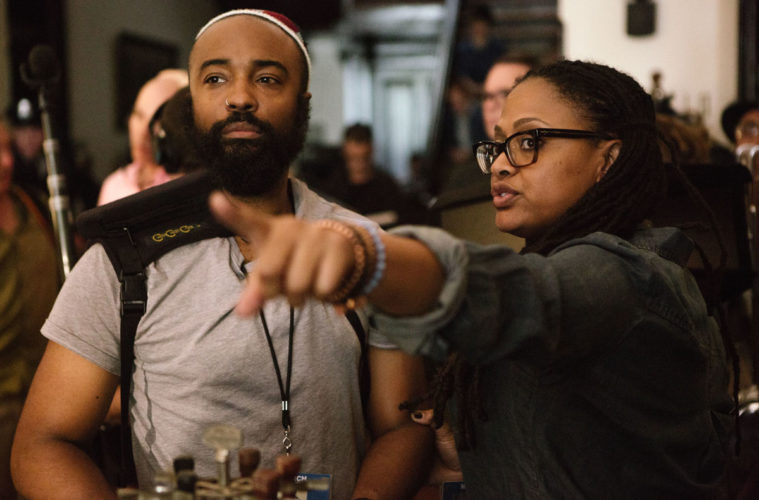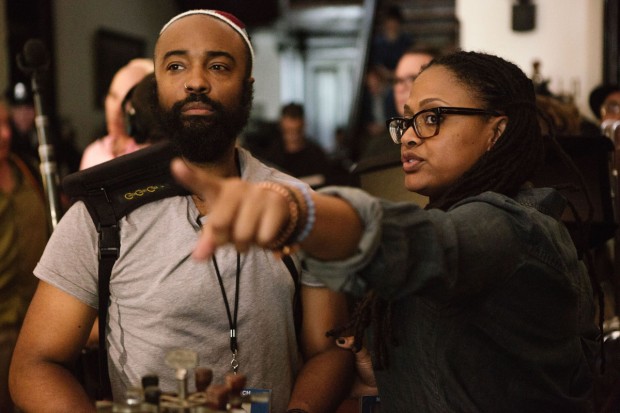
First grabbing our attention with Pariah and Ain’t Them Bodies Saints, this year marks the breakout of cinematographer Bradford Young. Having shot Selma and A Most Violent Year, the director of photography proves his hand at two vastly different films. With the former, he directly involves us in the incendiary protests that helped change the course of history (with much work still to go, as our current state proves), and lent gravitas and emotion with his framing of David Oyelowo‘s Martin Luther King, Jr.
After naming his work amongst the best of the year, I recently got a chance to speak with Young regarding his latest films. We discussed his preparation for the movie, why he doesn’t watch dailies, the MPAA rating for Selma, how he chooses which project he’ll do next, the freedom of A Most Violent Year, which film has his favorite cinematography of the year, and much more. Check out the full conversation below.
The Film Stage: First of all, congrats on both films this year and your work thus far. I love Pariah and Ain’t Them Bodies Saints is incredible.
Bradford Young: Thank you, man. I appreciate that.
So with Selma specifically did you look at any photography of MLK to prep for the movie?
Yeah, there’s obviously tons and tons of images of him you can find anywhere. No photographer specifically but, yeah, it was the obvious cadre of folks that were around at that time: you know, Elliott Erwitt, all those kinds of photographers that were there photographing the civil rights movement. It wasn’t specifically about MLK, but more about the era. So, yeah, and that landscape goes all the way from Gordon Parks to Elliott Erwitt to Howard Bingham, all the folks that sort of passed by, [Richard] Avedon, all these folks inspired us and inspired the look and feel of the film, for sure.
The speeches in particular, there’s such an immediacy and you really place us there. It feels like you might have storyboarded. Is that the case?
Nah, we didn’t storyboard those, but we did storyboard some pieces. That was just igniters for what we’d do on set. We storyboarded mainly the marching sequences, the conflict sequences. Ava came to me early on and said she definitely wanted to make the anti-biopic. We were discussing the sentimentality and the sort of only-objective perspective you find in a lot of American biopics, and we wanted to do something that was way more engaged and way more involved. So, yeah, photographs helped and photographers always helped perform that kind of language. Photographers never operate from a distance. They always operate from within, at least the ones we liked. The ones we love and appreciate. So not really storyboarded, but there are tons of visual references that we had that we felt had an appealing connection to the time and the sort of story we wanted to tell visually.
I was surprised when I saw it, but liked the way it was handled, with the archival footage of the march. You obviously didn’t shoot that stuff, but did you have a hand in the feel of what those images convey or was that more in the editing room?
Yeah, that was all visualized and conceptualized between Spencer [Averick, the editor] and Ava [DuVernay] and that for sure is a collaboration that I hope all of us find a space to honor because their collaboration is magical. So, they are real students, real fantastic. They’re storytellers and they really know how to organize and bring feeling to the story that Ava wants to tell. A lot of those decisions were made later. It’s funny, I’m not involved in that process at all but I am just a big fan of watching their work. They do have a way of being able to take us on a journey and make us feel at the end. That sequence is all conceptualized. I saw some of that footage earlier on in pre-production, but I didn’t have any sort of say of what was used. I was as surprised as you the first time I saw it.
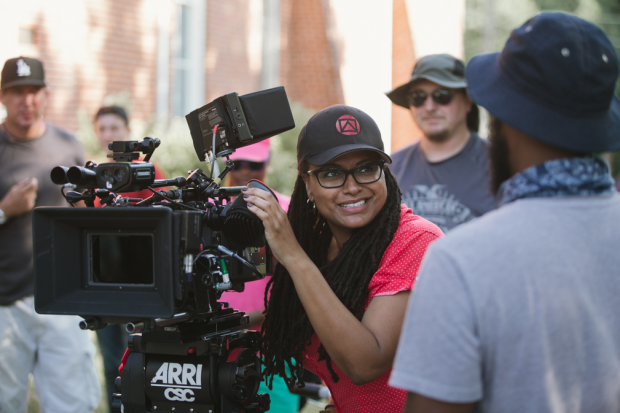
Speaking of your overall experience, you’re so involved with the minutia of every frame of the movie. I’m sure you the results of the dailies, but did you see a lot of rough cuts and the jump to the final product?
If Ava reads this, she’s going to laugh, because I generally stay away from the editing. Man, it’s a real scary place for me because I haven’t matured enough and grown within in myself as a filmmaker to know how to handle rough cuts. What they essentially are is us just looking at how images are organized. It’s not about the image. [Laughs] But I grew a lot on this movie, not because I went to see rough cuts, but because we’re very close friends she required that I be part of the conversation, so she wants feedback. She wants to see if it’s working or not working.
Actually, I didn’t have a lot of say at all, but when I did see the film – it was right before we went to color correction – and I got a chance to watch it and she knows what I like to do, watch it on a very small device, maybe an iPad or a little flip-up and I watched it in the privacy of my own home, early in the morning. I like to experience it that way because it’s very close and personal and I can stop it and pause it and think about things. I do feel like when you have too many cooks in the kitchen, it could turn the steak bad. I try to stay out of that conversation because I know cinematographers can be very vocal in an unwanted way and so I stay out of the conversation. Especially with this collaboration, because Ava and the crew are excellent. They are just incredible, so, you know. I’m as much a fan as anybody else. [Laughs]
You’ve mentioned how you have a very personal connection to your work – obviously, you do after shooting everything – but a lot of your projects feel like you have a close connection with the filmmakers and/or the material beforehand. How much of that factors in your decision on your next project?
Yeah, that is a requirement overall, over the material itself. Sorry for having a long answer, but a script is just a blueprint. A great director, what I believe, is able to just take the words from the page and bring them to set and let them burn and dissipate and let the actors take hold of the material. It’s hard to gauge whether the film will be a great film just because of the script. It’s the skeleton. It’s the bones. But film is a living art form and it changes every second so a script can’t contain the inertia of the filmmaking process. That’s a nice chunk, but not the majority.
The big chunk for me is when I meet this person, is this somebody I want in my life after we finish the process because film is a process. It’s arduous. It’s contentious. It’s a struggle. It’s beautiful. At the end it forges enemies and it forges friendships, so my requirement, top of the charts, top of the pyramid of requirements is that I can have a relationship with this person after I finish the process. I’ve been very fortunate not only to have the directors I’ve worked with in my life as friends and comrades but they’ve also become teachers. They’ve taught me a lot and these are people that I consider family now. Ava is family. Ava is beyond family. This is a person that I’ve had a connection to for ages. J.C. [Chandor] is my buddy. That’s a good friend. I can go across the board. Everybody has become a friend, a comrade, and a pal. That’s so important to me. If I can’t link with you on that level, I don’t know if I can do a good job for you.
Yesterday, the MPAA gave Selma a PG-13 rating. After seeing it, I think it fits, but the brutality, which is necessary, it comes across. Thinking back, you actually don’t see anything incredibly violent. It’s more the effect that your cinematography gives. There’s an effect you get without showing us violent images.
I didn’t even know it got rated yesterday. Thanks for putting me on. [Laughs] I’m not surprised, man. I won’t be surprised if it got an R rating, because that’s just the way things work. So back to the idea of violence in the film, hey man, Ava is off the hook, bro. She’s an architect, bro. She gives the landscape and we hop on and try to make our contributions to it, but from day one, she was like, “I want to make this film about the brutality of the moment and what the black body or the activist body had to go through to attain the goal.” She wanted to come up with a device or devices that would allow us to witness the violence in a very visceral and cerebral way, but also not in a gratuitous way. It just was a big challenge. How do you do that? How do you approach violence without making it about the gore, but about the resilience and demise of the body? It was all part of Ava’s strategy, to get you in so that you see that and you never forget that was a violent, brutal moment and people paid a dear price for us to be here today. But not turn it into a conversation around the film. Make it about an experience. Make it repulsive but in the best way — in the most subtle, nuanced way. Which is what Ava’s all about. She’s about nuance and subtlety.
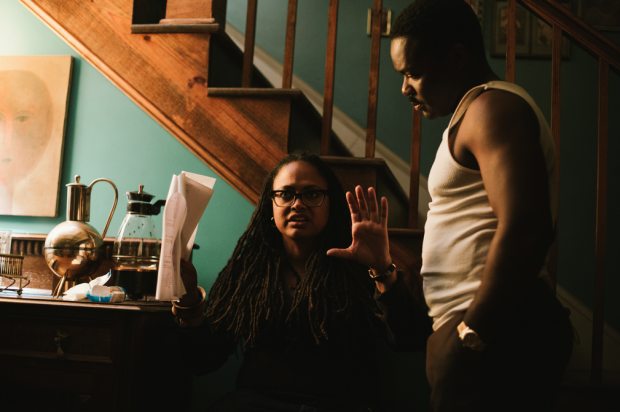
You really pulled that off. The bombing sequence and then when violence is inflicted on people you let the camera stay on them a little bit whereas other films might cut away quickly.
Oh, no. You’ve got to see it. The Annie Lee Cooper scene, when Oprah is thrown to the ground, we didn’t want you to be an observer of the violence. We wanted you to be a person that was also being violated. So, connected the camera to her body was very important in saying this is what it feels like when you’re lifted off your feet and thrown on the ground. This is what it’s like to be a mother watching your son be killed by the police. It’s all part of the strategy. Time stops. In that instance, time stops. Time slows down. It just feels so surreal and you’re not in real-time. That’s sort of why we slow time down. Shocking energy around those moments.
Getting a bit technical, this might have to do with shooting anamorphic, but the edges of the frame in many shots are vignetted and it gives it this kind of historic feel.
It’s great that you asked that, man. It was sort of an unconscious thing that was happening that nobody’s really asked me about, but it’s something that I’ve been thinking about a lot as I watch the film and, again, man, it’s just about the human eye sees the world in all of its glory from top to bottom from left to right. We see a lot. Our peripheral vision is massive and so I was very much interested in using wider angle lenses than I would usually on this film because I wanted the viewer involved, to feel invested. It’s not necessarily a distortion that I would embrace in most cases, but in this case, it didn’t bother me because it just felt like the film needed a little bit of tension in order for us to feel like we weren’t watching this film about somebody.
We were watching a film about our uncle, about our grandfather, about our brother, about our sisters, about our grandmothers. I wanted our people to feel like they were there, like they were part of the struggle. Or not even people that were part of the struggle. People who were observers, people who were against the struggle. We felt like, and I felt, like, something was working in an unspoken way that we must really express this idea of us being involved, engaged. I think the wide angle, you see that in the frame. Those wide angle lenses, they distort the side. I think that just created a greater periphery. It just made the human peripheral vision.
Before I go, I just wanted to ask about your other project this year, A Most Violent Year. With Selma obviously based on true events and A Most Violent Year, it was inspired by certain things, but it wasn’t specific, do you feel more freedom with A Most Violent Year than you do with Selma?
Oooh, I’ve tried to tackle this in other interviews. I mean, it’s not freedom in a sense. I understand what you’re saying. It’s less weighty, you know what I mean? A Most Violent Year just doesn’t have the weight to it, for me personally. You know, that film is weighty. That film is heavy. It’s a slow, heavy burn. As a piece of art, it’s weighty. As a person there to help visualize it, the stakes aren’t as a high. Listen, the story about Martin Luther King is a story I connect with on a deep, spiritual, cultural, historical level. It’s my responsibility to tell this story that can communicate to not only people on the Earth now, but our ancestors who have been waiting to see this – not waiting to see this film, but waiting for this moment where we would pay homage to the sacrifice they made. The people that made sacrifices are my grandparents, my parents.
So I have a connection to the material. I don’t feel free, because we’re not free. I’m really revisiting and reminding myself everyday that I’m still not free in America. That my people still have a long way to go in terms of being given the equal access to basic human rights that everybody else has. So it was just more weighty. I didn’t feel as free to just do as I wanted. I had to sort of make it something that people beyond ourselves can see and identify with on a deep, sort of real level, mature level. A Most Violent Year was freer because it’s really just telling stories. There’s a lot of weight to it because we’re dealing with the weight of capitalism and consumerism, etc., but I just felt freer in that space because of the social responsibility. The duty to be a custodian of the moment wasn’t on me.
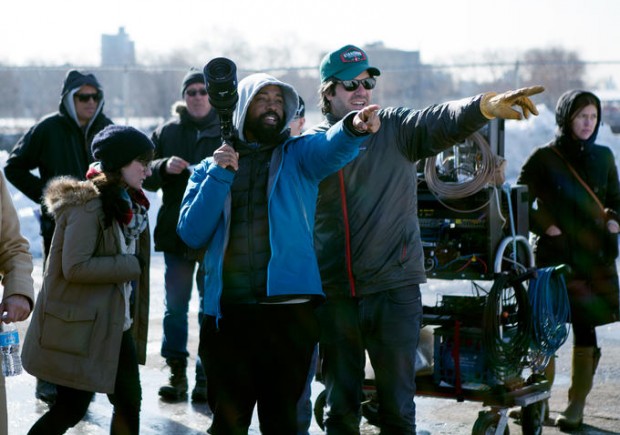
J.C. Chandor’s first film took place in one building almost and his second film was in one boat. With this film there might have been more pressure because he’s capturing a bigger landscape with more locations. Did you feel that?
Nah, no pressure man. It’s kind of nice, because I felt a great freedom to be expressive in a way that he had expressed for me early on, that he wanted to raise the stakes, visually. Those two other films, Margin Call and All is Lost, are beautiful within their own right. Those are amazing-looking films and I love both of those films, but I think he just wanted to bring another lean to his films, his visual perspective as a filmmaker. Yeah, it was a great opportunity to be free and encouraged to stretch it.
Last question: is there any film this year, that you didn’t shoot, that you most appreciated the cinematography of?
Oh, yeah. Foxcatcher.
Foxcatcher? Nice. Why’d you like it so much?
I just felt like that film really achieved everything that I would have hoped to achieve as an image maker. And as an image maker creating images that are totally, 100% tethered to story. I just felt like Bennett Miller and Greg Fraser have this relationship that I’m only hoping I can create with J.C. and Ava. They did it. They did it, man. That film, personally, is the kind of film I’d always hoped I’d be part of and I’d make. Nothing would satisfy more than to have been part of that process — just witness that process. It’s just so evident that they were channeling real purpose into that film and it’s just beautiful, man. I really enjoyed that movie.
Well, thanks. I really love your work and I can’t wait to see everything you do next.
Thanks, man. Take care.
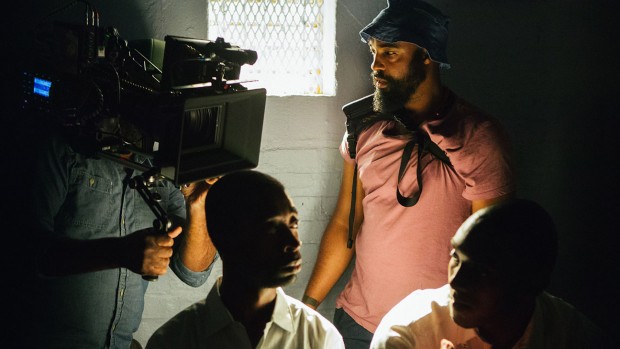
Selma is now in limited release and expands on January 9th, while A Most Violent Year enters limited release on December 31st.

